The Sinaloa Cartel and Cartel Jalisco Nueva Generación are in increasing competition around the globe. The older, innovative Sinaloa Cartel has had much more established external relations and pioneered expansion into Asia-Pacific. But CJNG is aggressively following suite, writes Vanda Felbab-Brown. This piece was originally published by Mexico Today.
The Sinaloa Cartel and Cartel Jalisco Nueva Generación (CJNG) are in increasing competition around the globe. The older and innovative Sinaloa Cartel has had much more established external relations and pioneered expansion into Asia-Pacific. But CJNG is aggressively following suite. Meanwhile, changes in the Sinaloa leadership and two other crime market developments have driven a far more provocative “foreign policy” by the Sinaloa Cartel than was the case until about 2015. In my previous column, I explored the “foreign policies” of the Sinaloa Cartel and CJNG in the Americas. This week, I focus on the Asia-Pacific region, and in my subsequent columns, on Europe and Africa.
Under the leadership of Joaquín El Chapo Guzmán Loera, the Sinaloa Cartel in the 2000s began developing import and export networks in the Asia-Pacific region. Sinaloa’s entrance into Asia focused on securing the supply of methamphetamine precursors, for which Sinaloa began liaising in Hong Kong with Chinese triads, including the two largest -14K and Sun Yee On. They controlled methamphetamine production in southern China and had easy access to precursors that the burgeoning Chinese pharmaceutical and chemical industries churned out. Sinaloa handed them contracts, and its footprint on the ground remained minimal.
Only slowly did El Chapo start experimenting with the development of a cocaine market in Hong Kong and China. China’s drug consumption was – and continues to be – dominated by heroin supplied from Myanmar and meth. Until 2013, the triads organized the meth cooking in southern China; after a 2013-2014 Chinese government crackdown, production relocated to Myanmar, but the triads retained control of meth trafficking throughout Asia-Pacific. With cocaine far more expensive than meth or heroin, the cocaine market was limited to the very rich, Chinese drug policy and police officials would quietly tell me in China in 2012 and 2013.
In attempting to build the cocaine market in China and Hong Kong, El Chapo was careful not to step on toes of the triads and instead to work through them. In a distant land of vastly different culture and language, the triads became an indispensable interface to consumers for the Sinaloa Cartel. Moreover, many triads had multifaceted linkages and various forms of protection from the Chinese Communist Party (CCP) and Chinese government officials. As I discuss in my report “China and Synthetic Drugs Control,” the triads sometimes help promote Chinese economic interests abroad and serve as informal enforcers against Chinese diaspora members who threaten the interests of the CCP or Chinese government.
But by 2021, CJNG upped its competition with the Sinaloa Cartel around the globe, now also trying to enter the cocaine market in Hong Kong and organizing a rival supply to undercut Sinaloa. This CJNG willingness to thrust its rivalry with Sinaloa into Asia was one of three developments that altered the careful, very circumspect, and non-confrontational “foreign policy” the Sinaloa Cartel had originally adopted in the Asia-Pacific region.
The second was the synthetic opioid tsunami beginning to hit the United States. Unlike the triad-dominated meth trafficking in Asia-Pacific, the supply of fentanyl and fentanyl precursors for the U.S. market became highly pluralized. Scores and scores of chemical producers and brokers – from mid-level chemical and pharmaceutical companies to newly-emergent small family-based Chinese criminal groups and upstart operators, to mom-and-pop and sis-and-bro operations – popped up around China. The range of precursor suppliers for the Sinaloa Cartel and CJNG grew far beyond the triads. As the 2020 “Lethal Exchange” report by the research group Center for Advanced Defense Studies (C4ADS) showed, various Chinese sellers of fentanyl precursors specifically would cater to Mexican clients in the criminal world, advertising in Spanish, bundling together ads for cocaine fillers and meth and fentanyl precursors, and emphasizing their ability to evade Mexican customs.
But with strategic foresight, the Sinaloa Cartel also established drug supply networks in India. The uncontrolled export of all kinds of, including illegal, synthetic drugs and their precursors from India is so extensive, a former senior Australian law enforcement official told me, that Indian traders can readily supply global illegal markets with fentanyl and meth precursors, if supply from China ever dried up. Other international drug policy officials commented to me that drug policy controls in India are significantly below that of China in terms of legislation, scheduling, enforcement, and awareness, even as the United States cooperates with India to tighten the controls. For the Sinaloa Cartel, India became a convenient backup source of precursors and finished drugs.
Beyond diversification, a third development by 2015 drove significant changes in the Sinaloa Cartel’s Asia-Pacific policy. With El Chapo on the lam, decision-making had been shifting to several actors within the Sinaloa Cartel, including his sons known as Los Chapitos. Los Chapitos intensified their father’s efforts to build up cocaine markets in the Asia-Pacific region. Much of their effort has centered on Australia and New Zealand, some of the most lucrative drug markets in the world where drugs often sell at prices multiple times those in Europe or North America. In 2021, for example, the Australian Criminal Intelligence Commission reported cocaine prices in Australia three times as high as in European markets. CJNG copied the Australia-New Zealand export orientation, and a series of record-breaking cocaine seizures started taking place in Australia since 2016, including this spring.
Once again, with thin presence on the ground, the Mexican DTOs had to rely on local distributors, not just at the retail level run by bikers’ gangs in New Zealand and Australia, but also at wholesale level. As John Coyne, head of strategic policing and law enforcement at the Australia Strategic Policy Center commented to InSight Crime, “the very thin on the ground” presence of Latin American DTOs there means, they operate “without a dominant purchasing partner” for their cocaine and “very under the radar and very much at the upper levels of distribution.” The Mexican efforts to get local alliances to expand cocaine consumption in Australia and New Zealand posed only limited threats to the Chinese triads’ drug dominance in the region. They do not have primacy in cocaine distribution in the region and Middle Eastern and Italian groups in Australia and New Zealand could snatch some of Mexican cocaine sales. But the triads could also exploit the Mexican cocaine drive to expand their market.
The big break in established Sinaloa Cartel foreign policy in the region centered on meth. With the brashness and combativeness that has characterized the narcojuniores and leadership successions of the Mexican drug market, and facing the super-aggressive and expansionist CJNG, Los Chapitos abandoned their father’s caution in the Asia-Pacific and also started peddling Mexican meth into Australia and New Zealand. CJNG followed suite. Expectedly, Hong Kong became an important transshipment hub. By 2021, the Sinaloa Cartel appeared to be liaising directly with New Zealand biker gangs for meth distribution, bypassing higher echelon triad intermediaries. Beyond enjoying reduced costs, Sinaloa Cartel would find little enthusiasm among the triads for peddling rival meth. With a unique chemical signature, Mexican meth is of very high quality and potency and is now produced solely from non-scheduled dual-use drugs with limited, if any, export controls. It is more a higher-end product than much of East Asian meth. There is no public information so far that the Mexican cartels have attempted to start selling Mexican meth in China or East Asia. But how long before they succumb to this inflammatory temptation?
Already, the Sinaloa Cartel’s and CJNG’s expansion into the Asia-Pacific meth markets puts them into direct competition with the triads, transforming a collaborative relationship into a confrontational stance. Such competition could trigger violence – even though drug-trafficking and distribution in Asia-Pacific is very non-violent in comparison with Latin America. With law enforcement agencies in the Asia-Pacific enjoying a potent deterrence capacity, criminal groups there tend to be very non-violent. Prior wars among the triads and tongs, for example, would result in only tens or low hundreds of casualties over several years, numbers that though regrettable and a big escalation by East Asian metrics, amount to merely one year or less in many a Latin American city. Still, any escalating violence would negatively affect public safety.
And like with Europe where the Mexican cartels are also expanding their operations, the big question is when the Mexican cartels will start pushing lethal fentanyl and synthetic opioids in Asia-Pacific. The region is already struggling to respond to escalating crystal meth use and is unprepared to deal with the public health devastation of synthetic opioids. Will law enforcement agencies in the region be able to deter the Mexican cartels from peddling synthetic opioids or rapidly shut down their fentanyl operations? Could the Chinese government use the triads to keep the Mexican cartels from crossing into fentanyl?
The consequences of a Chinese-triads-Mexican cartels war in the Asia-Pacific could even spill into government foreign policy and geopolitical domains.
Meanwhile, anti-crime cooperation between Mexico and countries in Asia-Pacific remains extremely limited. The United States has an opportunity to start facilitating such law enforcement collaboration.
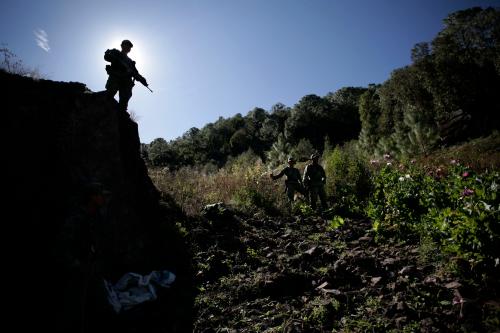
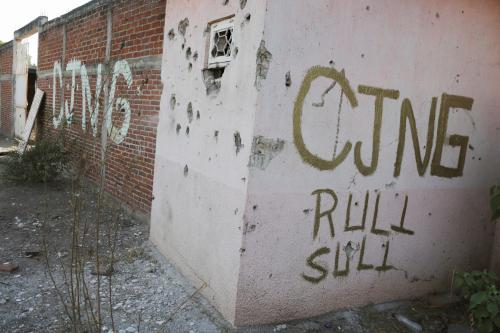
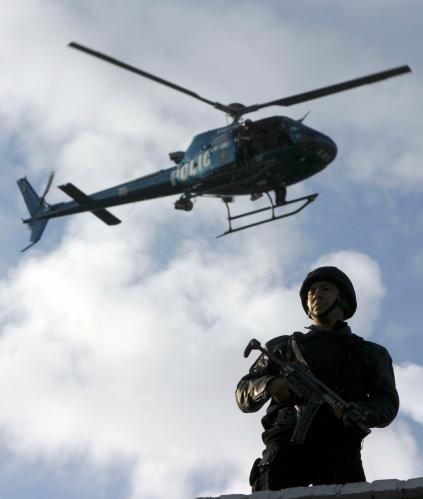

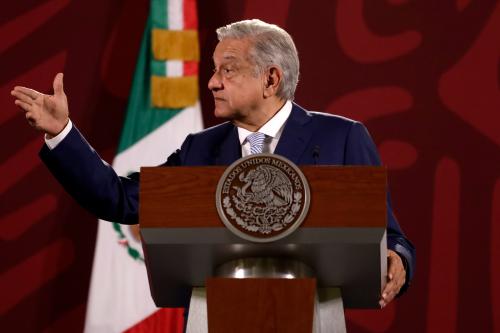
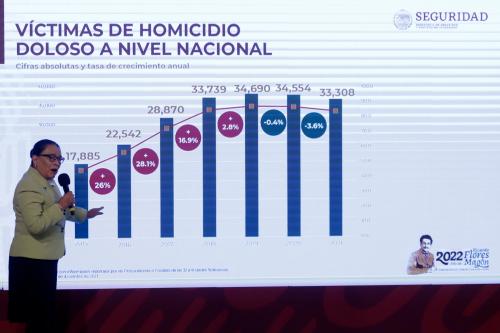
Commentary
Op-edThe foreign policies of the Sinaloa Cartel and CJNG – Part II: The Asia-Pacific
August 5, 2022